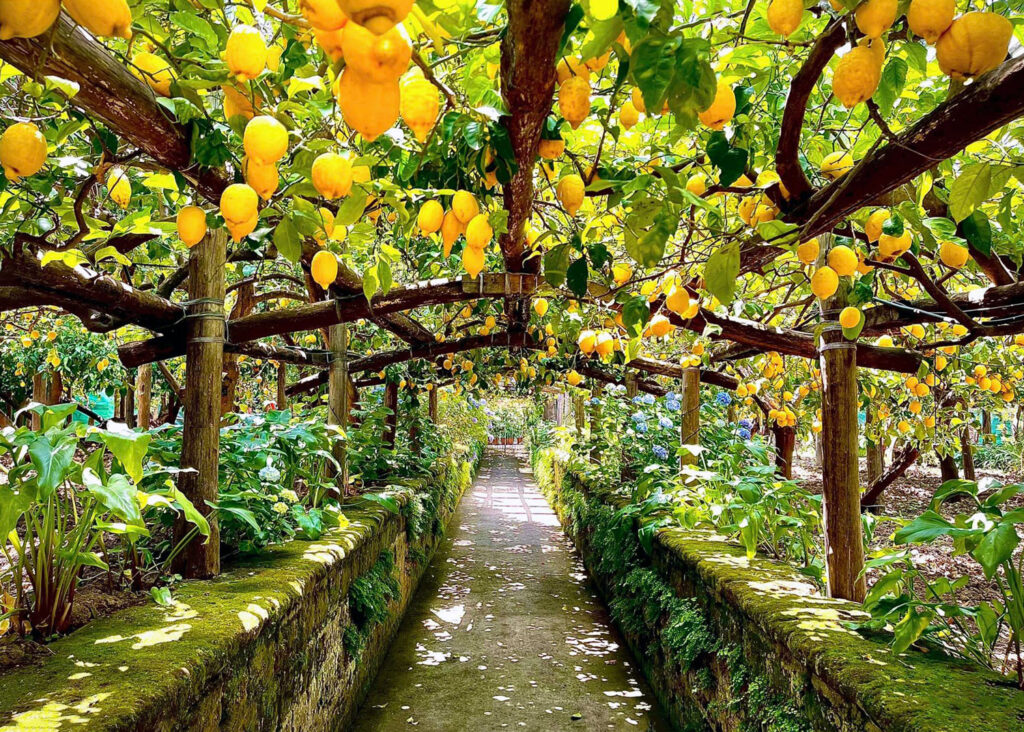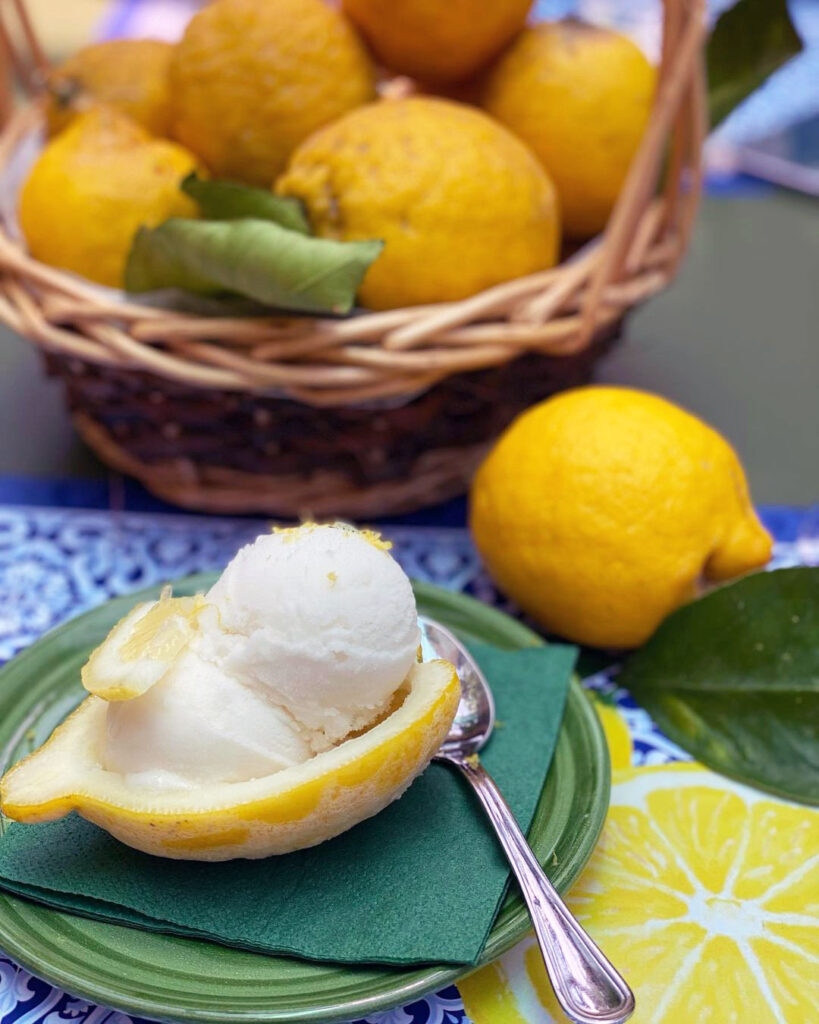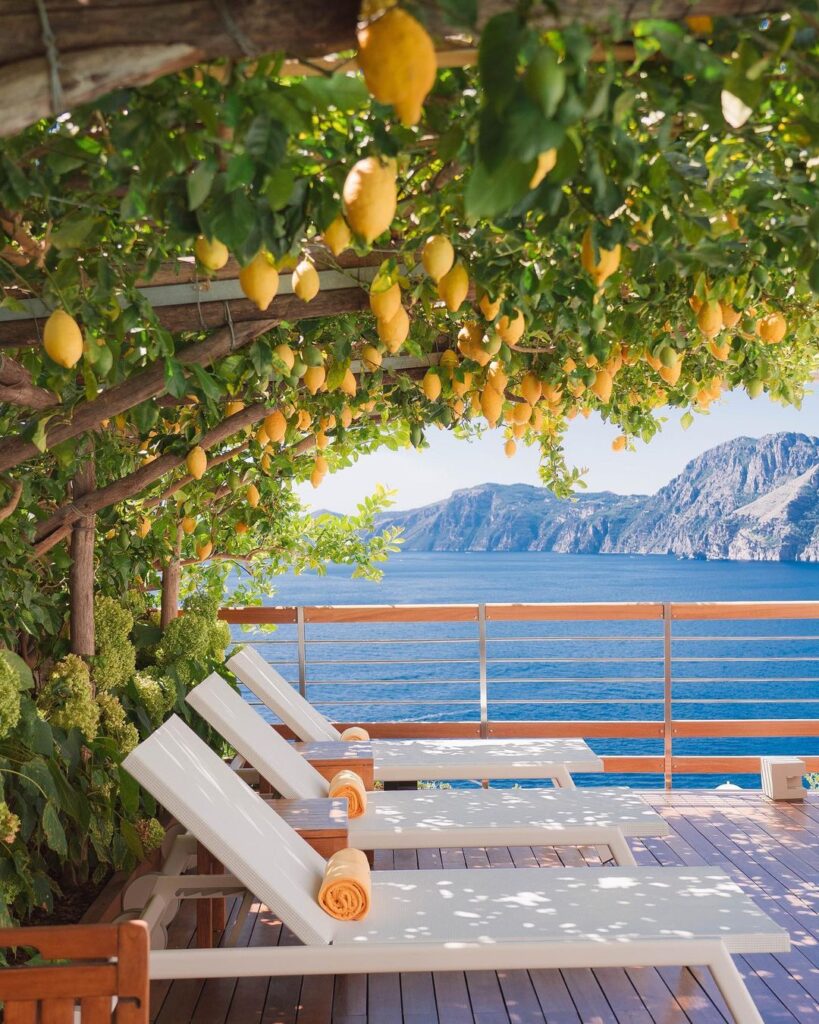
Sorrento is the land of lemons! This is a destination where cheerful citrus adorns every piece of women’s clothing and is prominently featured in local cuisine. Everywhere you look, lemons add a pop of yellow to the azure landscapes before you. When you’re in town, don’t miss the chance to visit a historic lemon grove in Sorrento. When you experience the fragrant zing that permeates the Amalfi air — from limoncello to lemon delights — your tastebuds will thank you.
The Origins of Lemons
When I took a trip to the Amalfi Coast, I knew I had to visit a lemon grove. “Lemons are everything you can see,” a local Neapolitan friend told me. Their origins are not European, though. The cultivation of lemons began in the mid-12th century during the Song Dynasty in China. Additionally, the word “lemon” itself has Indic origins. Lemons began to be farmed in the southern regions of Italy and Sicily during the 16th century but had arrived in Italy only a few centuries earlier. Frescoes in Pompeii and Herculaneum contain imagery of these fruits dating back to the 1st century AD (about 2000 years ago!).

Sorrento Lemons
The lemons in the Sorrento Peninsula are called ovale or feminiello di Sorrento and are different from lemons farmed on the Amalfi Coast which are of the sfusato type. Sorrentine lemons range from 90-150 grams in size. Fresh peels set these lemons apart from those found on the mass market — organic. Additionally, artisanal production techniques found on lemon farms, like hand peeling and grafting, allow for this. There are 4 harvests a year and each lemon is protected by regional stricture (IGP). As a result, no lemon can be farmed outside of the region with the same aroma, flavor, and peel consistency.
They are not only ubiquitous in decor but in the food as well. Near the beach, you can find delicacies like iced sorbetto stuffed inside frozen lemons. In cafés on the main downtown strip that stems from Piazza Tasso, you can order delizia al limone. This is a true delight of sponge cake drizzled with lemon syrup and filled with cream. For those craving a full lemon experience, Ristorante ‘O Parrucchiano La Favorita on the Corso Italia provides a beautiful setting where you can enjoy fresh pasta and fish dishes under lemon trees.
There are many lemon groves in Sorrento. I visited Villa Beatrice, a garden run by Marino Marzano and his brother Massimiliano. They inherited the farm from their godfather and specialize in the production of artisanal limoncello. Their limoncello is sold at organic Neapolitan markets as well as the Naples National Archaeological Museum.


Visiting A Lemon Grove
This was my first glimpse of Sorrento’s lemons. The small villa sat on the mountainside overlooking the Bay of Naples and Mount Vesuvius. A short walk up from the house led us into a pagoda area where the trees sat. It was 5:00 pm and the sky was nearing sunset. Glimmers of sunlight seeped past the netting around the trees and gave a radiance to the leaves dangling from the orange and lemon trees. We breathed in the earthy scent of lemon leaves as the trails of tangy lemon appeared.
Lemons have dominated local agriculture over the last century. “Lemons are our core business because we have the perfect climate here,” says Marino. The fertile climate on the coastline, with its plentiful sunshine and sea breezes, is perfect for lemons. Olive trees also help to protect citrus trees from inclement weather. Many lemons are sold to local markets and restaurants, and a large portion of the market economy for limoncello is fueled by tourism. Lemon groves can average 1,000 visitors a year. When life gives you lemons, the people will come.


More Than A Fruit
There is a sweetness, literally, to this place. Walking around the colorful towns of the Amalfi Coast lifted my mood. In Positano, the cobblestone roads were lined with stores selling lemon scarves, bags, dishware, soaps, and more. In a women’s clothing shop, the saleswoman could not resist showing me scarves in 10 different lemon prints. The lemon is not only a delicious fruit to savor, but art in itself. “The color of lemon yellow is so sunny and joyful. Seeing the trees in Sorrento overladen with lemons against the cobalt blue sky or sea reminds me of Van Gogh’s paintings,” says Anna Tuck-Scala, a local art historian.
If you are planning a trip to the Amalfi region, prepare to be enriched by a flavorful history built on culinary tradition, community, and aesthetic beauty.

3 Lemon Groves You Should Visit In Sorrento
I Giardini di Cataldo
Located right in Sorrento, I Giardini di Cataldo is a beautiful lemon grove you can visit during a short tour. Salvatore Esposito inherited the garden from his father Cataldo Esposito who began to farm this land in the 1800s. Here, visitors can enjoy a guided tour and taste homemade limoncello, lemon marmalade, and a variety of liquors. These include mandarin, orange, walnut, and licorice.
Azienda Agricola “La Masseria”
A 20-minute drive from Sorrento, Azienda Agricola “La Masseria” is our go-to for an authentic farm-to-table experience. The farm dates back to 1898 and visitors can take a 2-3 hour tour of its many fruit trees, olive & lemon groves, and animals. The property has an old oil mill and an ancient wine cellar that is open to visitors. You can taste cheeses, marmalades, limoncello, and homemade bread on a tour — you can even add on lunch or dinner (which includes a wine tasting). The farm can also provide transportation from your hotel on the Amalfi Coast.
Azienda Agricola Galano
Just a short drive from the town of Sorrento, the Azienda Agricola Galano is a lemon farm that supplies Sorrento lemons, its precious peel, and juice to local producers for limoncello production. The farm is set across two and a half hectares and is located about 200 meters above the sea. Galano uses machinery to press this citrus and is stored in special climate-controlled rooms to maintain maximum flavor.


